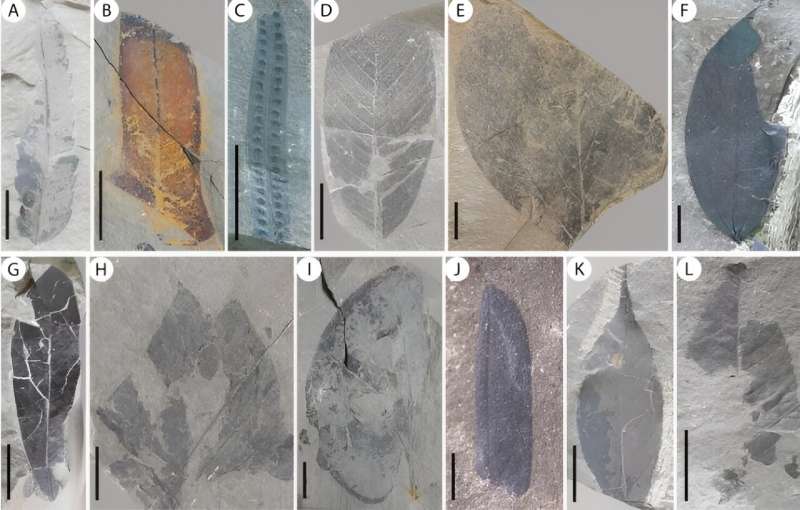This article has been reviewed according to Science X's editorial process and policies. Editors have highlighted the following attributes while ensuring the content's credibility:
fact-checked
peer-reviewed publication
trusted source
proofread
Newly discovered megafossil flora reported from northern Vietnam

Vietnam is known worldwide for its high plant species diversity and endemism. However, the evolutionary history of Vietnam's exceptional plant biodiversity remains poorly understood. Due to the paucity of Neogene plant fossils, it remains unclear how the vegetation of northern Vietnam evolved, and what the driving factors were.
In a study published in Palaeogeography, Palaeoclimatology, Palaeoecology, researchers from the Xishuangbanna Tropical Botanical Garden (XTBG) of the Chinese Academy of Sciences reported a newly discovered megafossil flora from the late Miocene of the Yen Bai Basin in northern Vietnam.
The researchers collected 302 plant megafossil specimens, mostly well-preserved leaves with detailed venation. They investigated the floristic composition, reconstructed the paleovegetation, and used both the Coexistence Approach and the Climate-Leaf Analysis Multivariate Program to quantitatively estimate the Late Miocene climate of the Yen Bai Basin.
The late Miocene Yen Bai flora comprised 15 families, 20 genera, and 30 species, dominated by Fabaceae, Fagaceae, and Lauraceae with a large number of Sapindaceae, Annonaceae, Euphorbiaceae, Anacardiaceae, Hernandiaceae, Malvaceae, and Betulaceae. The megafossil flora suggests that the Late Miocene vegetation in northern Vietnam comprised mixed tropical evergreen and deciduous broadleaf forest components, and that the overall floristic composition represented a seasonal tropical forest.
Quantitative paleoclimate reconstruction of the Yen Bai flora indicated a modern-like warm and humid tropical monsoon climate. It also indicated the relative stability of temperature seasonality and obvious seasonal variation in precipitation, the only difference from now being a lower dry season precipitation. A monsoon climate type appears to have persisted in northern Vietnam since at least the Paleogene, with a demonstrable development from the middle Eocene to the late Miocene and maximum intensification in the middle to late Miocene.
"The study shows the influence of an Asian monsoon, characterized by the seasonality of precipitation, on the evolution of plant diversity in northern Vietnam," said Su Tao of XTBG.
More information: Hung Ba Nguyen et al, Monsoon influence on plant diversity in northern Indochina: Evidence from the late Miocene Yen Bai flora, northern Vietnam, Palaeogeography, Palaeoclimatology, Palaeoecology (2023). DOI: 10.1016/j.palaeo.2023.111925
Journal information: Palaeogeography, Palaeoclimatology, Palaeoecology
Provided by Chinese Academy of Sciences





















